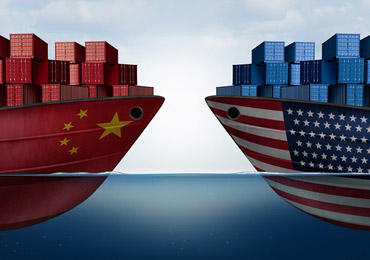By Robert M. Oberlies and Jessie Lu
 The U.S. Government increased tariffs last Friday on $200 billion worth of Chinese goods, hiking the tariff rate from 10 percent to 25 percent. The new tariff rate went into effect at 12:01 a.m. eastern daylight time on May 10, 2019, and will apply to goods (i) entered for consumption, or withdrawn from warehouse for consumption, on or after the above time, and (ii) exported to the U.S. on or after May 10, 2019. The second clause above implies that the new tariff rate is not applicable to goods in transit that left the relevant China port before May 10. However, there remains some uncertainty as to how the rule will be implemented, including how the export date will be determined and whether the goods must arrive in the U.S. by a certain cut-off date.
The U.S. Government increased tariffs last Friday on $200 billion worth of Chinese goods, hiking the tariff rate from 10 percent to 25 percent. The new tariff rate went into effect at 12:01 a.m. eastern daylight time on May 10, 2019, and will apply to goods (i) entered for consumption, or withdrawn from warehouse for consumption, on or after the above time, and (ii) exported to the U.S. on or after May 10, 2019. The second clause above implies that the new tariff rate is not applicable to goods in transit that left the relevant China port before May 10. However, there remains some uncertainty as to how the rule will be implemented, including how the export date will be determined and whether the goods must arrive in the U.S. by a certain cut-off date.
Based on inquiries with the Office of the United States Trade Representative (USTR), it appears that goods which arrive before June 1 will not be subject to the tariff increase. This June 1 cut-off date may be an internal unofficial policy to facilitate the implementation of the new tariff rates, as the applicable Federal Register Notice does not mention this date. Goods that were en route before May 10 but arrive after June 1 may still be exempt from the tariff increase, provided that the Customs and Border Protection accepts the evidence of export date provided by the importer.
Importers with goods en route from China to the U.S. should check the date the goods were exported from China and when the goods are expected to arrive at a U.S. port. Importers should also collect official documentation showing an export date prior to May 10, 2019.
The USTR will establish a process by which interested persons may request that particular products on List 3 be excluded. USTR will publish a separate notice describing the product exclusion process, including the procedures for submitting exclusion requests, and an opportunity for interested persons to submit oppositions to a request.
China announced today that it would impose higher tariffs on most goods on a revised $60 billion target list of U.S. goods. Starting June 1, More than 5,000 U.S. products will be subject to additional tariffs of 5 percent, 10 percent, 20 percent and 25 percent.
We are assisting clients in assessing the impact of the new tariff rate and other Section 301 duties and evaluating their options to mitigate the impact, including:
- Substantiating evidence of export date, verifying HS Code classification and whether client goods are subject to the 25 percent tariff;
- Liaising with government representatives of behalf of clients with regards to goods that are expected to arrive at a U.S. port on or after June 1.
- Reviewing their supply chain to determine China origin products impacted and conducting customs classification review to ensure accurate classification of products imported;
- Evaluating alternative sourcing structures and options;
- Capturing cost increases of products directly or indirectly affected by the Section 301 Duties and reflecting the increase in pricing and commercial terms;
- Submitting comments to USTR to request exclusions from tariff lists and making use of other remedies afforded under USTR procedures for affected U.S. stakeholders; and
- Assessing impact of Chinese retaliatory tariffs and related measures.
We are closely monitoring developments and will provide updates on significant changes.
This client alert is published by Fredrikson & Byron and does not constitute legal or professional advice. Please consult a Fredrikson attorney if you have questions.

